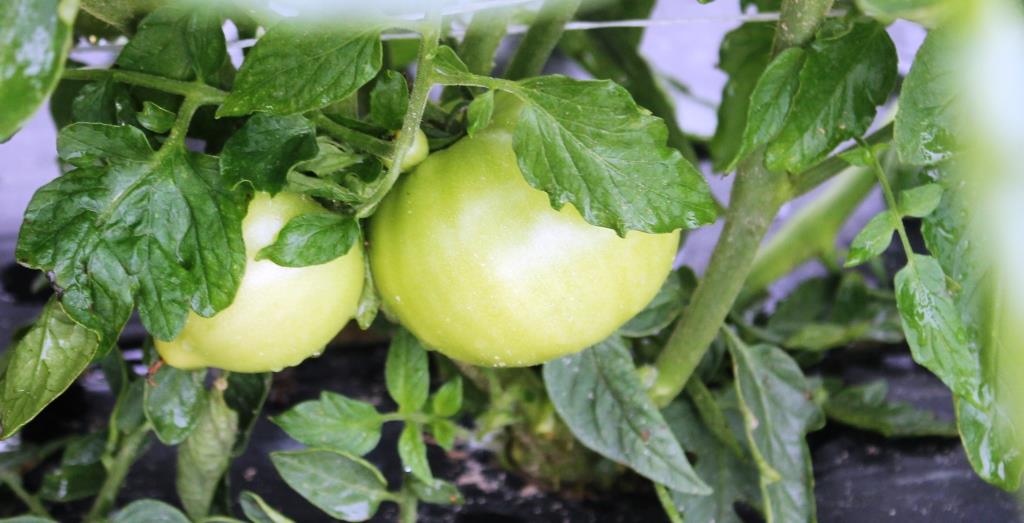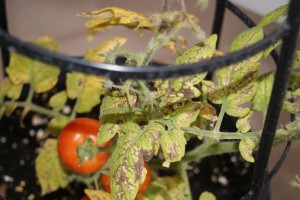One of the most common tomato problem home gardeners encounter in the late spring and early summer is blossom end rot. The good news is that blossom end rot can be prevented with the use of drip irrigation and adequate fertilization. Since tomatoes need a consistent supply of water to prevent blossom end rot, drip under plastic works well. Blossom end rot effects crops in the solanaceae family and appears as a grey, mushy dead area at the base of the vegetable. It is caused by calcium deficiency but is usually a result of wet / dry cycles brought on by an inconsistent irrigation program. The best cure for blossom end rot (BER) is a consistent level of soil moisture throughout the fruiting cycle.
Due to recent rain, warm days, and cool nights, leaf diseases could be developing, so now is a good time to scout tomatoes.Look for brown spots, spots with halos, wilting leaves, and yellowing leaves. This could be a sign of bacterial leaf spot, which is transmitted when rain splashes soil and water on leaves of the plants. Affected leaves should be removed from the growing area and destroyed. Once leaves are affected, there is no cure, but preventative sprays of copper-containing fungicide (bactericide) plus mancozeb sprays can reduce incidence of infection, if the spray program is initiated before too many spots are present.
For a detailed look at the various diseases of tomato, the EDIS publication “A Series on Diseases in the Florida Vegetable Garden: TOMATO” offers an excellent summary. Another resource UF/IFAS offers for disease diagnosis is the NFREC U-scout website. U-Scout provides information on over 40 potential disease issues in tomato. Additionally, any plant disease can be diagnosed through your County Extension Office and the Plant Pathology lab at the North Florida Research and Education Center.
- Woodland Pinkroot Adds Vibrant Color to Spring Landscapes - April 27, 2023
- Easy Care Roses for the Gulf South - April 20, 2023
- Herb Gardening: When Oregano is Flavorless - March 9, 2023


